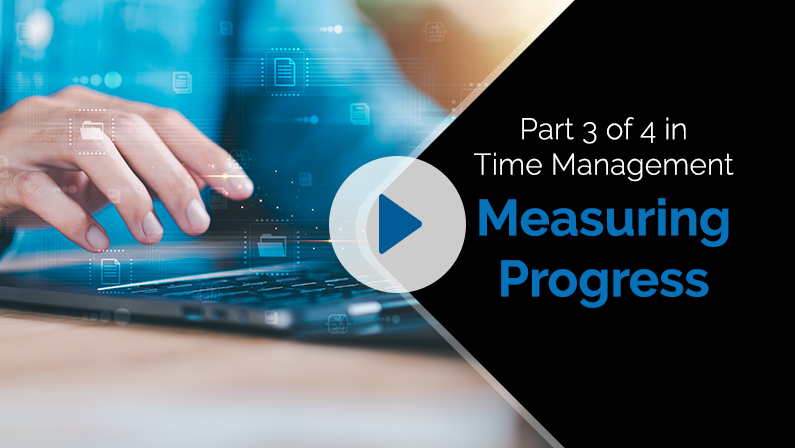Welcome to part two in our series on time management.
Welcome to part three in our series on time management.
Part one, we looked how to assess where you’re currently spending your time. Part two, we talked about how to prioritize your time.
And part three, we’re going to look at how to measure progress. And I want to note up front that this is going to be different for everybody. Everybody has a different style, but we’re going to give you some foundational metrics that are both qualitative and quantitative or objective and subjective. Let’s go ahead and get started.
So measuring progress as it relates to time management really is about assessing the efficiency and the effectiveness of your time management relative to the goals or the outcomes you’re looking for.
So there’s five key foundational metrics we want to throw out at you to give a try.
1. The first is tracking your time. So we assessed how we’re spending our time. Now we want to track that. And that can be a log. It can be a tracking tool that you’re using.
2. Number two is your to do list completion rate. So you’re going to have a to do list for the day, for the week, even for the month. Track your completion rate against that to do list.
3. Number three, the prioritization effectiveness. We talked about prioritizing using the Eisenhower matrix. Now you want to see how effective you are at staying in that upper left quadrant of tasks.
4. Fourth is self assessment, and that’s a little bit more subjective. It’s kind of reflecting on how you’re doing relative to what you intended to accomplish with this whole exercise.
5. And number five is then the deadline adherence. We all have deadlines, personally, professionally, how are we doing relative to meeting or missing those deadlines.
So those are some key foundational metrics that you can use. There are many out there. Again, adapt those to what your style might be. So there you have it again.
I think it’s important to note that you really need to adapt these tools for your style. You’re going to intuitively know if you’re making progress or not. You’re going to feel a sense of progress, but these tools will help you measure that towards outcomes, because sometimes progress for progress sake is not the intended outcome you’re looking for. You’re actually looking to improve outcomes.
So these tools will help you gauge where you’re at in that process in any case https://huntleigh.com/videos/ https://huntleigh.com/blog/check us out. Thanks for watching. We’ll see you soon.





